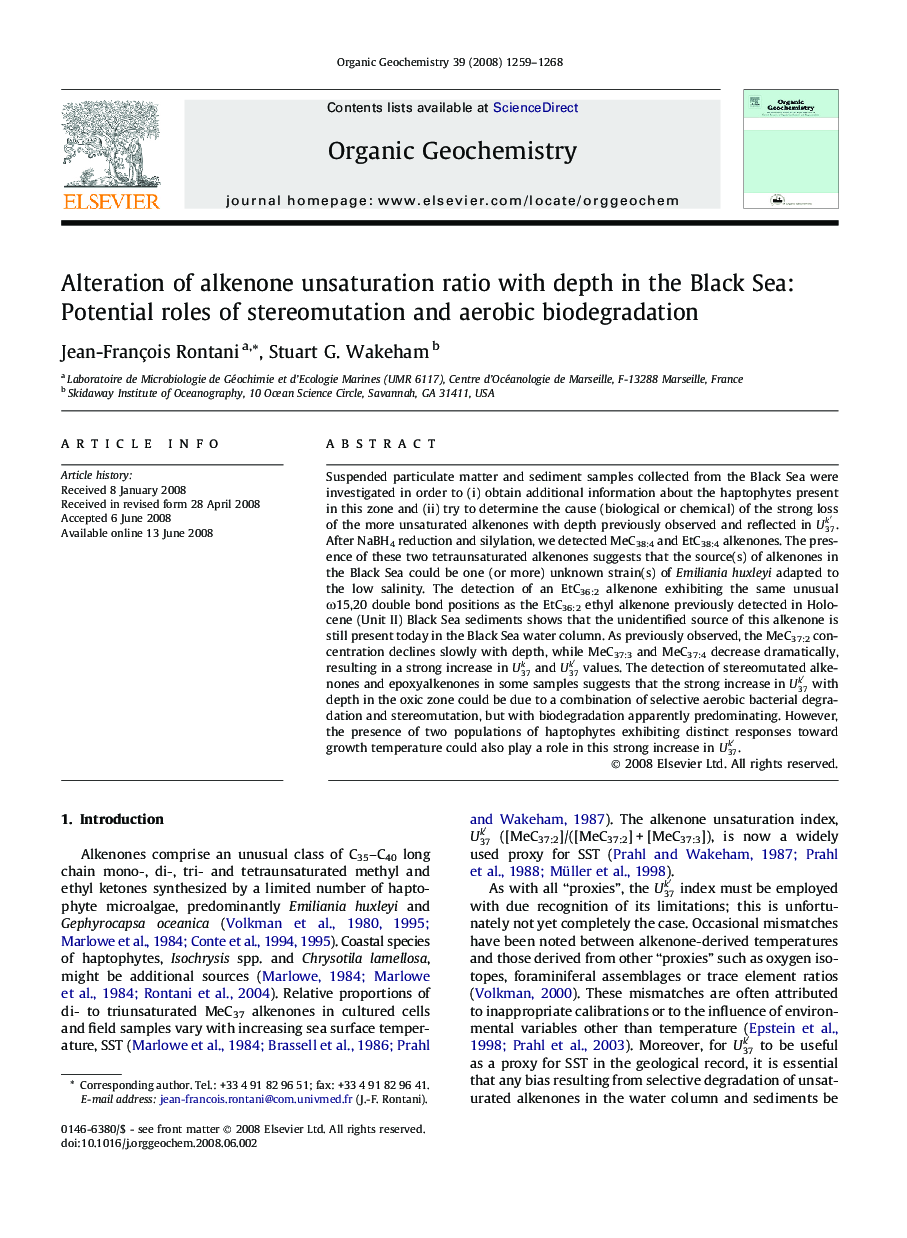| Article ID | Journal | Published Year | Pages | File Type |
|---|---|---|---|---|
| 5161955 | Organic Geochemistry | 2008 | 10 Pages |
Abstract
Suspended particulate matter and sediment samples collected from the Black Sea were investigated in order to (i) obtain additional information about the haptophytes present in this zone and (ii) try to determine the cause (biological or chemical) of the strong loss of the more unsaturated alkenones with depth previously observed and reflected in U37kâ². After NaBH4 reduction and silylation, we detected MeC38:4 and EtC38:4 alkenones. The presence of these two tetraunsaturated alkenones suggests that the source(s) of alkenones in the Black Sea could be one (or more) unknown strain(s) of Emiliania huxleyi adapted to the low salinity. The detection of an EtC36:2 alkenone exhibiting the same unusual Ï15,20 double bond positions as the EtC36:2 ethyl alkenone previously detected in Holocene (Unit II) Black Sea sediments shows that the unidentified source of this alkenone is still present today in the Black Sea water column. As previously observed, the MeC37:2 concentration declines slowly with depth, while MeC37:3 and MeC37:4 decrease dramatically, resulting in a strong increase in U37k and U37kâ² values. The detection of stereomutated alkenones and epoxyalkenones in some samples suggests that the strong increase in U37kâ² with depth in the oxic zone could be due to a combination of selective aerobic bacterial degradation and stereomutation, but with biodegradation apparently predominating. However, the presence of two populations of haptophytes exhibiting distinct responses toward growth temperature could also play a role in this strong increase in U37kâ².
Related Topics
Physical Sciences and Engineering
Chemistry
Organic Chemistry
Authors
Jean-François Rontani, Stuart G. Wakeham,
